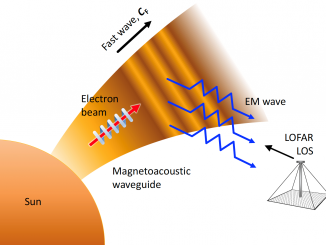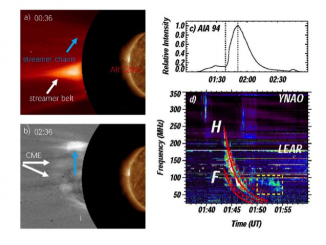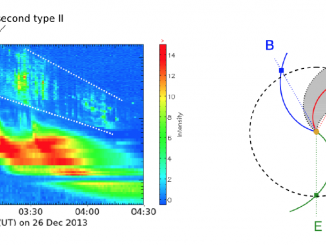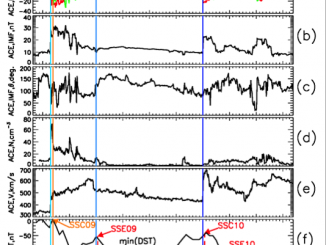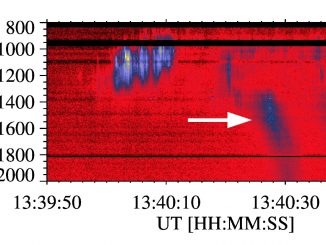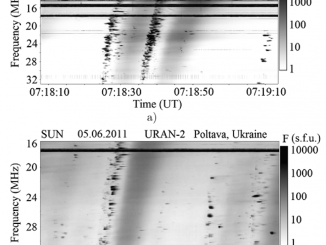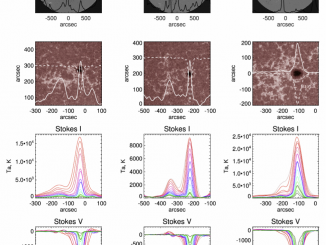Modulation of radio emission, fast magnetoacoustic waves and magnetic field measurements in the solar corona with LOFAR
by Kolotkov et al*
Fast magnetoacoustic wave trains are a promising seismological probe of the corona, revealing the magnetic connectivity and providing the estimation of the absolute value of the coronal magnetic field. Low-frequency radio observations allow for the detection of fast wave trains in middle and upper corona, above the field-of-view of EUV imagers and spectrographs, via the modulation of the radio emission by the variations of the electron concentration. We present the […]

